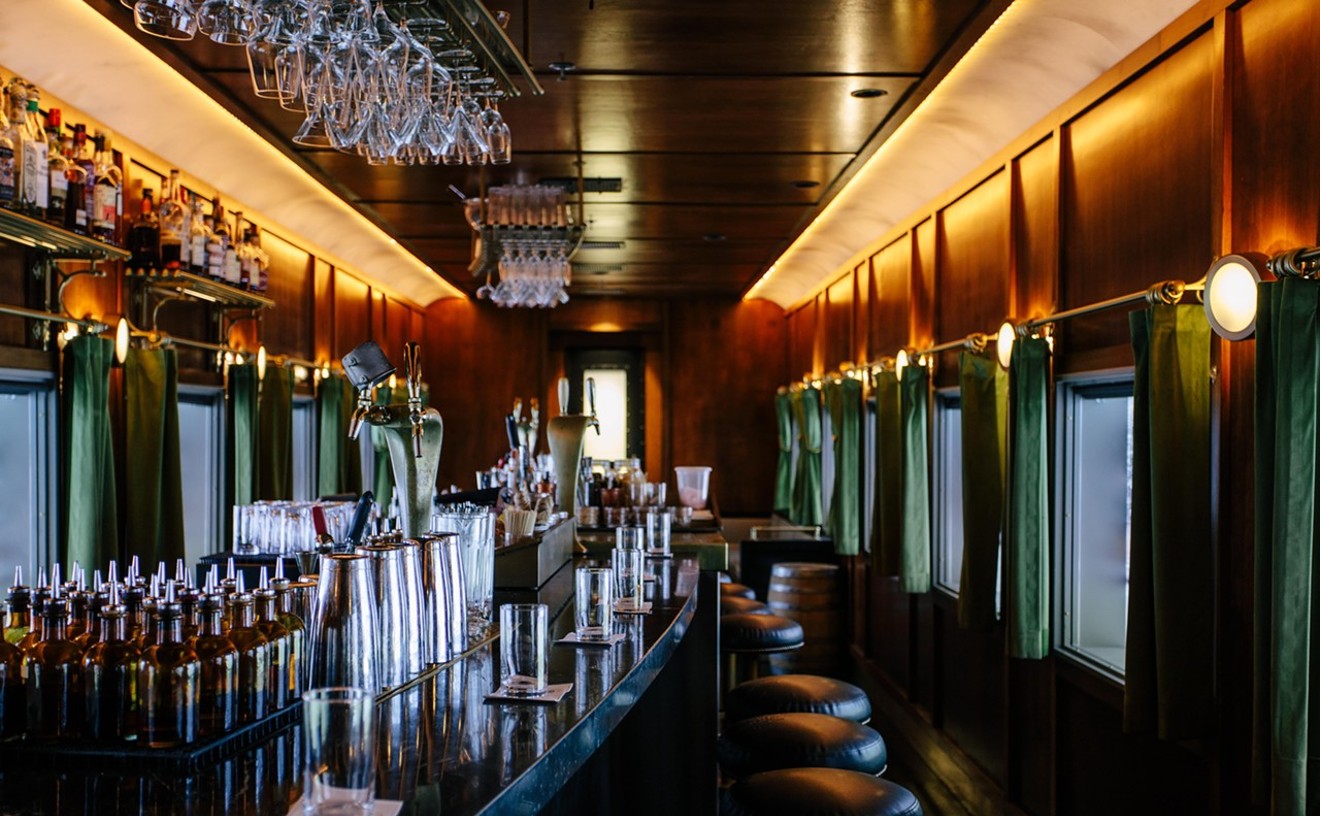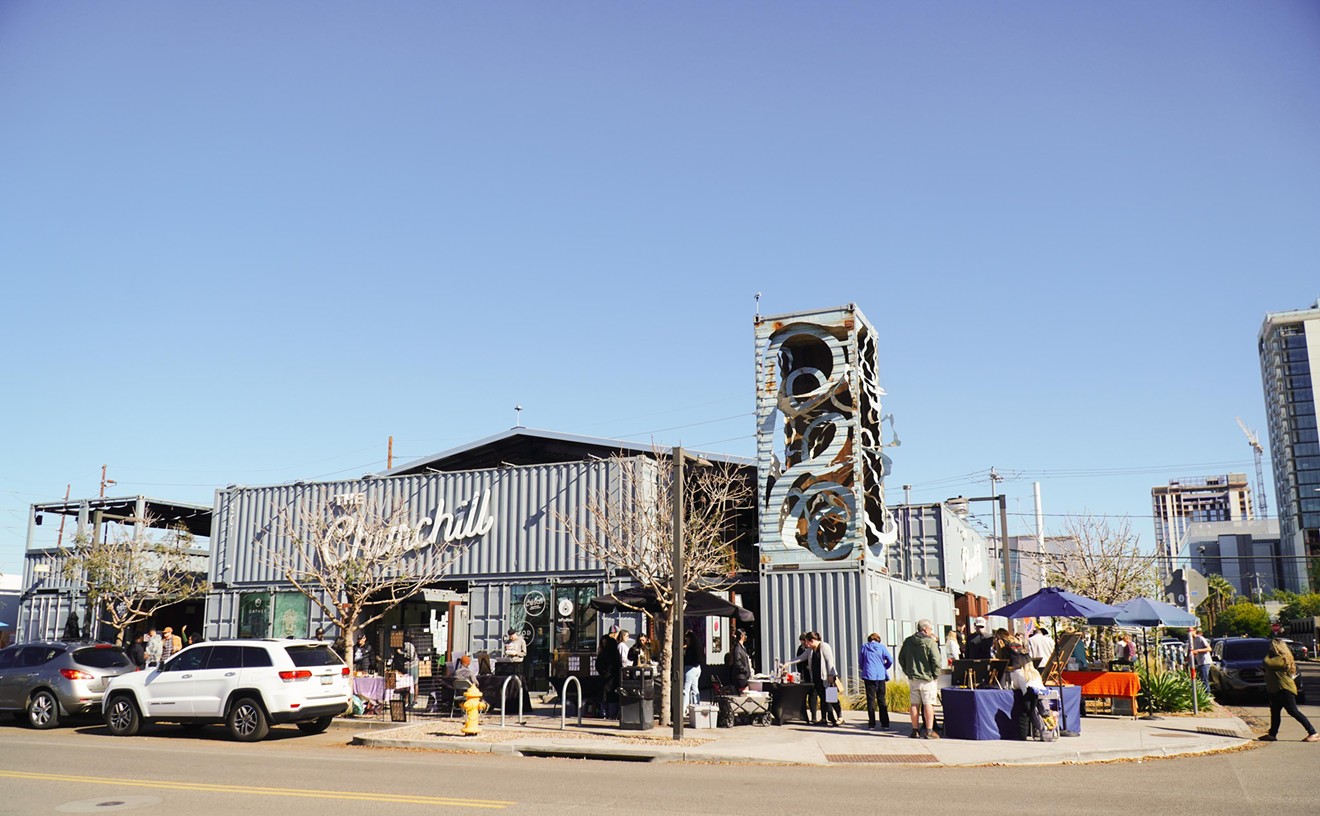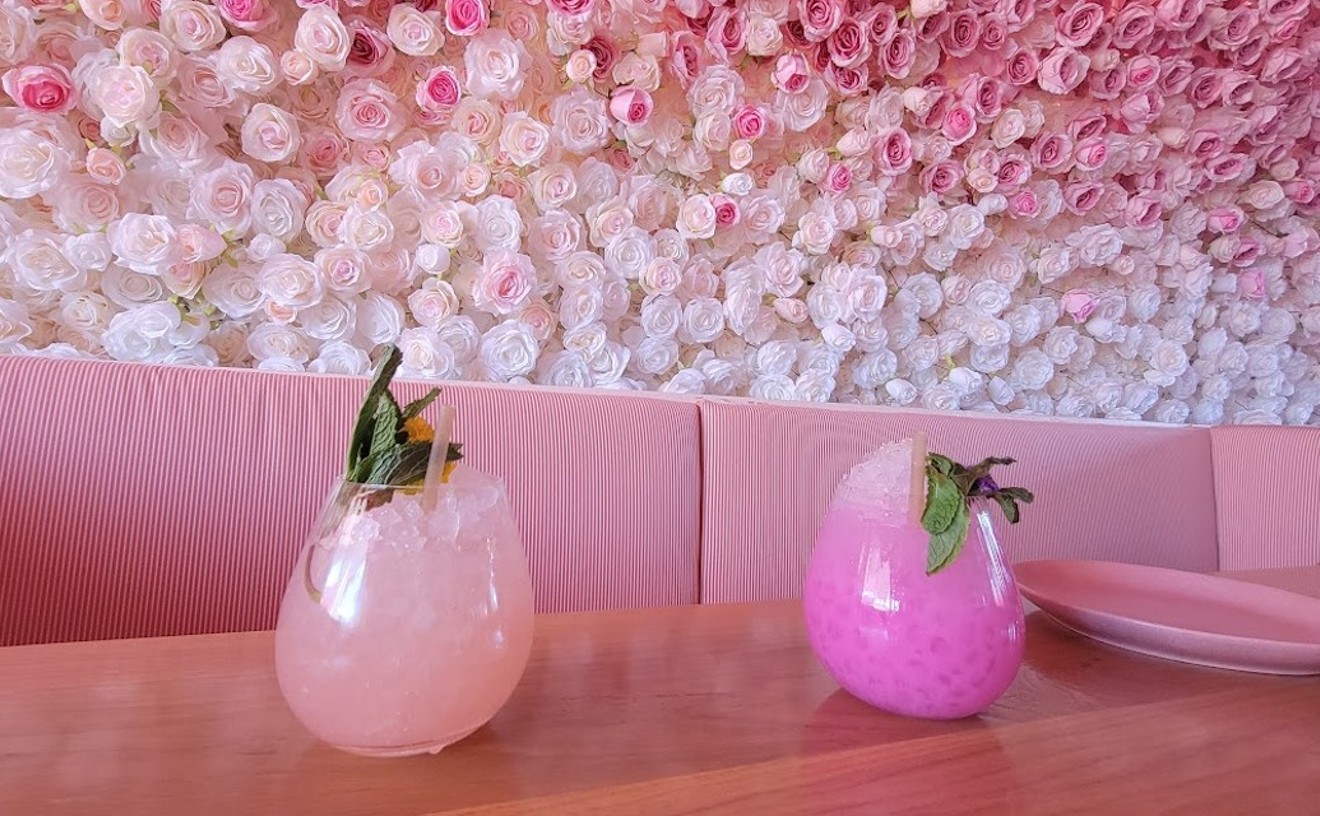Liquid: Beer-wine hybrid
Name: Terroir Project
Style: Spontaneously fermented mixed fermentation
ABV: 9.9 percent
Brewery: Arizona Wilderness Brewing Company
Address: 201 East Roosevelt Street (plus the original Gilbert location)
Hours: Noon to 10 p.m., Monday to Thursday; 11 a.m. to midnight, Friday and Saturday; 11 a.m. to 10 p.m., Sunday
Lowdown: Like a song heard often or the later bites of a meal, surprise is something that diminishes with time. When somebody surprises you again and again, your standards for their surprising you elevate, making any future surprises more difficult. When a brewery spikes gose with cantaloupe and old bruin with Sycamore bark, when it wheels tankards into the Oak Flats forest to catalyze a wild ale overnight, you, having seen this, are less likely to be surprised by future beers.
And yet, Arizona Wilderness continues to surprise, doubling down and rolling the dice like riverboat gamblers.
The latest beer tapped and bottled by owners Jonathan Buford, Patrick Ware, and head brewer Chase Saraiva began its life as a natural wine. It started as a Sangiovese, as a red wine crafted from an Italian grape varietal. Because we're not fermenting below a thousand foot rock crag in Umbria, and because this is Wilderness, this wine ends up as something related but different: one of the most eye-opening beers in town.
Where to begin?
The beer, Terroir Project, was fermented using 100 percent wild yeast. Usually, breweries employ stable, predictable yeasts to pilot the fermentation that turns cooked grain water (called wort) to beer.

Jonathan Buford and Patrick Ware waiting to kick off a spontaneously fermented ale in spring 2019.
Chris Malloy
Arizona Wilderness has plenty of experience with wild yeasts, tiny yeasts floating around invisibly in the air. A fermentation using these yeasts is called spontaneous. You never quite know how the final product will taste when using them, for they haven't been developed in a lab or isolated in some adept brewery. Standard yeasts go straight down a known path. Wild yeasts can go straight, left, up, sideways, or corkscrewing into the seventh dimension.
Saraiva’s prior beer-wine hybrids made from Sangiovese (Sangio Cerveza) have used saison yeast, resulting in a more straightaway fermentation. But his latest beer-wine Frankenstein, on tap since Saturday, is the result of spontaneous fermentation: nada but ambient yeasts lying on Arizona vineyard grapes.
Page Springs Cellars provided the fruit. “We brought the grapes in whole cluster,” Saraiva says. “Then we foot-stomped two tons of grapes.”
Once they had, Saraiva and his crew added the juice, stems, and skins to a foeder, a large wooden barrel for brewing. Instead of adding yeast, they left the grape juice alone. This allowed natural yeasts that had settled on the grapes to awaken, sparking fermentation.
From here, Saraiva simply stepped aside. And that’s the whole point of this project.
Three or four days after transferring the grape juice to foeders, the yeast, Saraiva says, had acted surprisingly quickly. So he mixed in the wort. Arizona Wilderness boiled wort for Terroir Project from Sinagua Malt barley as well as Grain R&D White Sonora Wheat and bronze barley. And then — with the early-stage natural wine and wort united — the wine inputs and beer inputs began to ferment together, transforming and easing toward a target between the two, surrendering to nature.

Brewers from near and far kicking it as Wilderness prepares to innoculate a coolship beer with wild yeasts.
Chris Malloy
Terroir Project is part of a greater effort organized by Firestone Walker Brewing Company in Paso Robles, California. Breweries from as far as Australia have participated. There are rules breweries must follow, such as using grapes from within 100 miles of the respective participating brewery. Wilderness went further. Every ingredient but the hops come from Arizona, and even they, Cascades, have been dry-aged in a box-shaped locker just outside Wilderness’s Gilbert original location.
A wild fermentation using local inputs puts the land under a high-powered microscope; wine grapes, too, are seen as the ultimate representation of how land can speak through food. “With this process, you try to get as much of a true representation of the region as possible,” Saraiva says.
Terroir Project, of the four Arizona Wilderness beer-wine hybrids I’ve tried, is the most interesting.
Where the most recent Sangio Cerveza came out tangy and pungent, Terroir Project exists on the other end. The beer looks like cranberry juice in the glass, a deep ruby-oxblood. With the fist taste, the tannins grip you, a slight tugging at the tongue in the way of a rugged Sangiovese.

Some lacing forms on the side, but otherwise Terroir Project looks a lot like cranberry juice.
Chris Malloy
This is a beer squarely within bitter zones of flavor. There is something of the medicinal quality of a washed-rind cheese but in an elegant way, less butter-funk and more soft-cheese-smooth. The carbonation provides crucial levity. There is a little sugar and some tang. This beer is for adventurous drinkers, for the hard-hearted, for fellow riverboat gamblers.
Terroir Project lets you explore some of the far wild reaches of where yeast, fermentables, and our state’s best ingredients can take you.
And once your drink is history, you can still taste the glorious grape musk on your lips.
Endnotes: Both locations are now pouring two versions of Terroir Project: one sparkling (from natural conditioning), the other still. (The draft version is sparkling.) There is a .3 percent alcohol difference between the two versions. At north of 9 percent ABV, the beer is so heady and close to the ABV of a white wine that this discrepancy will be hard to notice, and nice and easy after a few glasses.












